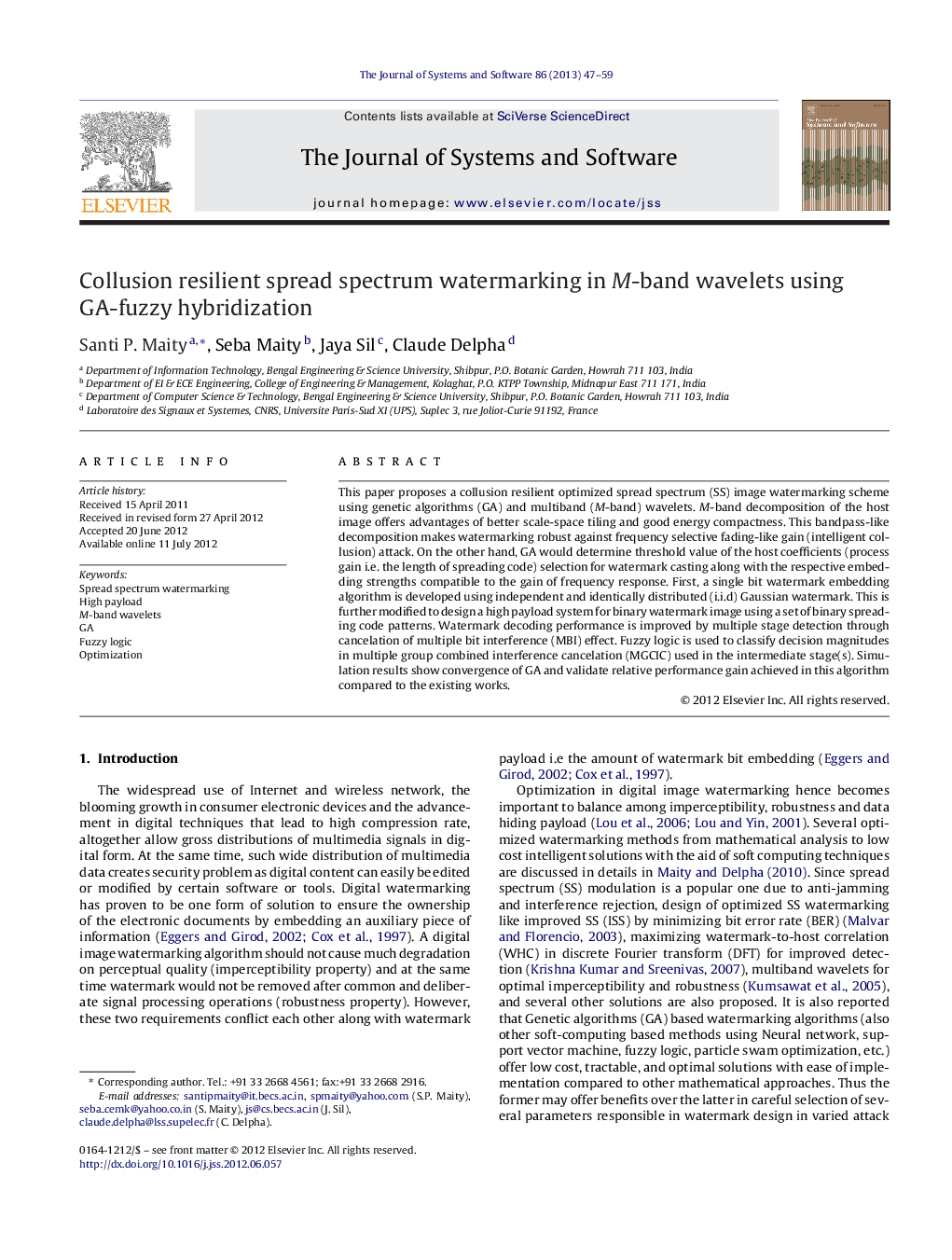| Article ID | Journal | Published Year | Pages | File Type |
|---|---|---|---|---|
| 461845 | Journal of Systems and Software | 2013 | 13 Pages |
This paper proposes a collusion resilient optimized spread spectrum (SS) image watermarking scheme using genetic algorithms (GA) and multiband (M-band) wavelets. M-band decomposition of the host image offers advantages of better scale-space tiling and good energy compactness. This bandpass-like decomposition makes watermarking robust against frequency selective fading-like gain (intelligent collusion) attack. On the other hand, GA would determine threshold value of the host coefficients (process gain i.e. the length of spreading code) selection for watermark casting along with the respective embedding strengths compatible to the gain of frequency response. First, a single bit watermark embedding algorithm is developed using independent and identically distributed (i.i.d) Gaussian watermark. This is further modified to design a high payload system for binary watermark image using a set of binary spreading code patterns. Watermark decoding performance is improved by multiple stage detection through cancelation of multiple bit interference (MBI) effect. Fuzzy logic is used to classify decision magnitudes in multiple group combined interference cancelation (MGCIC) used in the intermediate stage(s). Simulation results show convergence of GA and validate relative performance gain achieved in this algorithm compared to the existing works.
► Optimized spread spectrum watermarking robust against fading-like collusion. ► Flat frequency response of M-band wavelets is integrated with GA-fuzzy hybridization for improvement in imperceptibility and robustness. ► Improvement in ∼3.5 dB on imperceptibility and ∼20% in robustness against Rayleigh fading the over existing works. ► Robustness is improved to 30% using multiple group combined interference cancelation using fuzzy logic.
